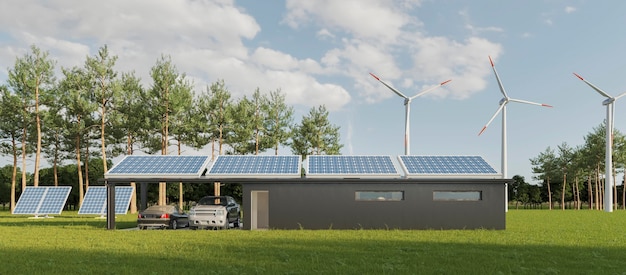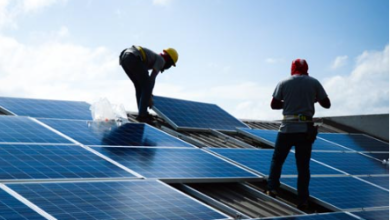Clean Energy Superpower: Australia on the Path to a Brighter Future using Solar

By 2030, Australia hopes to be a clean energy superpower, generating nearly 50% of its electricity from renewable sources such as solar and wind. Already, Australia has more installed solar capacity than any other country globally, with 4 out of 5 households having rooftop solar panels by the end of 2025. The country’s carbon emissions have been falling steadily since 2009 and, under current legislation, will reach 28% below 2005 levels by 2030.
The Current Energy Situation in Australia
The electricity generation sector accounted for 27.5 percent of Australia’s primary energy consumption in 2016-17. This was followed by 19.3 percent of the total consumption of energy.
The 2021 Australian Energy Statistics for electricity generation show that 24 percent of the electricity generated in Australia came from renewable energy in the year that was released compared to 21 percent in the year prior.
The increase is due to the rise in solar installations. Solar power is the most significant renewable energy source at 9 percent of total production, increasing from 7 percent in 2019. One out of four Australian homes uses solar energy, which is the highest solar installation rate anywhere globally.
Current Situation: The above all shows that Aussie is leading by example. The way we are using renewable-energy resources is only bettering our future. All countries worldwide should follow our lead in taking steps towards a cleaner, greener environment!
The Australian Government has set an ambitious target of 50 percent electricity generation coming from renewables by 2030. This would mean doubling current levels and reducing emissions from electricity production by 26 percent compared with 2015. The Government is also investing in clean energy research, development, and demonstration projects through its $1 billion Clean Energy Innovation Fund.
Impact of Solar Energy
A further $100 million will be invested in large-scale solar research, development, and demonstration projects, including solar thermal power plants.
Australia has the highest utilization of solar energy globally, having approximately 30% of all homes equipped with solar panels on the roof.
As of the 31st of January, 2022, more than 3 million solar rooftop PV systems were installed in Australia.
The conversion of sunlight into electricity with PV systems creates no greenhouse emissions or gases.
The excess electricity can be redirected to the grid (delivering an incentive to feed in) or stored in rechargeable batteries for later use. Batteries also can provide backup electricity in cases of power outages.
A solar battery and PV system give the possibility of off-grid energy self-sufficiency. It’s also a significant step towards shifting to a non-carbon fuel alternative.
How Can We Generate More Renewable Energy?
Creating more renewable energy sources is no easy feat. It takes time, dedication, and initiative. For the most part, it’s simply not as easy as flipping a switch. However, if we work together and make clean energy our primary concern, it can be achieved. Install solar panels in your home or business can contribute to green energy generation.
When choosing a solar panel installation company, consider some essential factors. You first want to do different research companies and find out how long they have been in business. After finding a reputable company with experience installing solar panels, it’s time to get down to brass tacks. Many different panels are available on today’s market; therefore, knowing which one will work best for your home or business can be challenging.
Choosing The Right Company can benefit from generating more renewable energy
When it comes to choosing solar panels, you have many options. But to ensure you’re choosing a suitable and appropriate service provider, you must consider a few points. These include; choosing a CEC-approved solar retailer who follows set industry rules so that you can ensure quality performance. Choosing certified battery installation experts and CEC accredited solar installers. These are just a few points that make sure you’re opting for a quality service.
You should also look for payment options, experts who use premium products, fast installation services, a warranty for the product, and support as well. These points ensure you’re investing in the right asset.
Govt’s role in Solar Power
The Small-scale Renewable Energy Scheme (SRES) offers a financial incentive to companies and individuals to invest in small-scale renewable energy sources such as solar panels for rooftops or solar water heaters as well as heat pumps. It is done through certificates of small-scale technology (STCs) that are given out in advance of the expected power output of a system (based on the date of installation and the geographical area) for some time until SRES expires in 2030.
The cost of STCs is subject to market conditions. The amount of the subsidy you get will be contingent on various aspects, such as the size and location of the solar array and the cost of STCs when the system was put in place.
The ACT Government has committed to providing batteries to up to 5000 ACT businesses and homes. More details are available at the bottom of the page.
Importance of Solar Power Energy
Solar panels absorb the sun’s energy which transforms into electricity. This is called the photovoltaic system. It is also called solar PV.
Panels are available in a variety of different power and wattages.
There are a variety of brands available, and new technology and efficiency are constantly emerging. While solar panels appear the same, their power dependability, quality, and reliability differ significantly.
A roof that is fully exposed is the ideal place for solar. If that’s not possible, ensure that the panels are placed in the most sun-friendly location.





